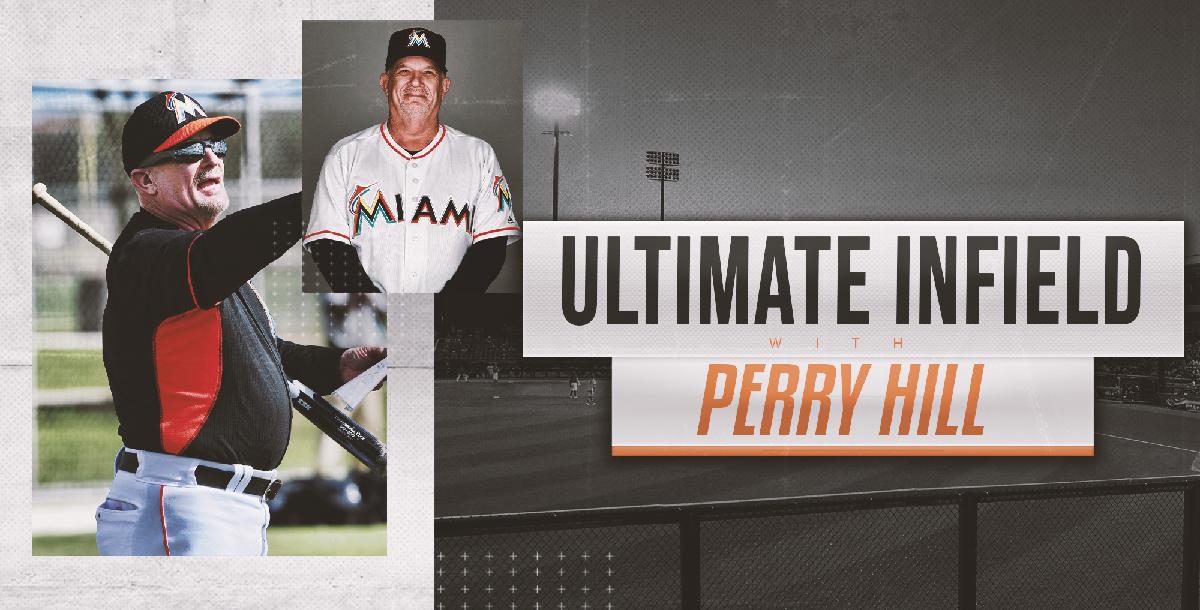How To Build An Elite Baseball Infielder
- By Grant Young
Every youth baseball infielder that’s right-handed wants to play shortstop. Heck, even the left-handed players want a chance at shortstop, too. And while every baseball coach should give each deserving player a fair opportunity at the position there can only be one shortstop on the field once the game begins.
But that doesn’t mean the rest of your infield players can’t have the ability to play shortstop. It’s any coach's dream to have multiple capable players in the infield, who are versatile enough to play multiple positions and willing to play any position to help their team win games.
Learn more. See Coach Hill's Infielder's course......
In addition to catchers, it always feels like many of the best baseball coaches are former infielders. This might be why there’s a plethora of excellent knowledge about how to develop elite infielders, both at the youth baseball level and up through the game’s amateur and professional ranks.
We have compiled a few of legendary infield coach Perry Hill’s courses on this subject, which will give you all the info you need to turn your current crop of infielders into above-average players.
Perry Hill - The 6 F’s of Fielding
Perry Hill is currently the infield coach for the Seattle Mariners. He has spent 22 years as a Major League Coach with multiple teams, such as the Texas Rangers, Miami Marlins, Detroit Tigers & Pittsburg Pirates. Hill was MLB Network’s 2017 Infield Coach of the Year after the Miami Marlins had the fewest MLB Errors that season. One season before, the Marlins set an all-time MLB record with 28 Consecutive errorless games.
Coach Hill has also coached seven players (Luis Castillo, Orlando Cabrera, Derrek Lee, Mike Lowell, and Dee Gordon) to Gold Glove Awards, and earned a 2014 Best Infield Coach award from the Boston Globe survey of MLB Executives and Coaches.
Coach Hill believes effective defense comes down to what he calls the “Six F’s”. Those are as follows:
1. Feet
2. Field
3. Funnel
4. Footwork
5. Fire
6. Follow
Coach Hill refers to these 6 “F’s” as his “foundation”, in the same way that a city needs a solid foundation to build anything on top of it. In other words, these 6 F’s are all crucial components of the fundamentals necessary to succeed as an infielder.
When it comes to the first “F”, Coach Hill has a few valuable notes. The first is that the infielder should be in a relaxed state while the pitcher has the ball. As the pitcher’s arm moves forward, the infielder will take a small step forward, while remaining on the balls of their feet, which will make him capable of moving in any direction at a moment’s notice once the ball is put in play.
The second “F” is Coach Hill’s way of explaining the wide base (legs shoulder width apart or further) that an infielder needs when fielding the ground ball.
This wide base position enables the infielder to have the ball and glove in the same view, making a more sound and consistent infielder. In addition, having a wide base eliminates any potential blind spots and creates better balance.
Ultimate Infield With Perry Hill

Coach Hill goes into greater detail about the “Six F’s” in another one of his courses, which is titled ‘Ultimate Infield With Perry Hill’.
Coach Hill says that the Third “F” (Funnel) is all about how the infielder brings the ball to their midsection after securing the ground ball. Once the ball gets to the middle of the body (to the belly button/chest area), the infielder should separate their hands with their thumbs down, which will automatically create a perfect angle for the throwing arm.
The Fourth “F” is Footwork. For this “F”, Coach Hill stresses that the formula to use when teaching footwork is “right to left, left to the target.” This means that a right-handed infielder's first step after securing the ball should be with their right foot, while their second step should be with their left foot, which is directed toward the target.
“F” number five is Fire. This just means throwing the baseball to the target, which all infielders should know how to do.
And the final “F” is Follow. This one might be overlooked, but also may be the most important when preventing throwing errors. All Coach Hill means by this is that the infielder should follow their throw to the target after making it. He doesn’t mean literally chasing after the throw; rather, taking a step or two in that direction, to ensure that their arm and body are going in the correct direction when throwing.
While Coach Hill’s “Six F’s” might make infielding seem easy, anybody who has actually played any of these positions knows that it takes a lot of practice, determination, and discipline to become a good infielder that makes few errors.
Yet, Coach Hill also notes that success in the infield all boils down to playing catch. For this reason, it’s paramount that players take their warm-up game of catch seriously before the practice begins. While this practice time is important for getting a player’s arm loose, it’s also a way for them to practice their repetitions and hone their throwing and footwork mechanics (the “Six F’s”) with each catch and throw made.
If the player doesn’t take this catch time seriously, not only are they missing out on an opportunity to improve, but they could also be developing lazy, bad habits that will translate onto the field when the game begins. And that’s not how anybody will become a starting shortstop.
Taking all of Coach Hill’s lessons and teaching them to your infielders will improve their skills, and have them all be deserving to play shortstop for your future games.
Get Coach Hill's Infield course today....



No comments:
Post a Comment